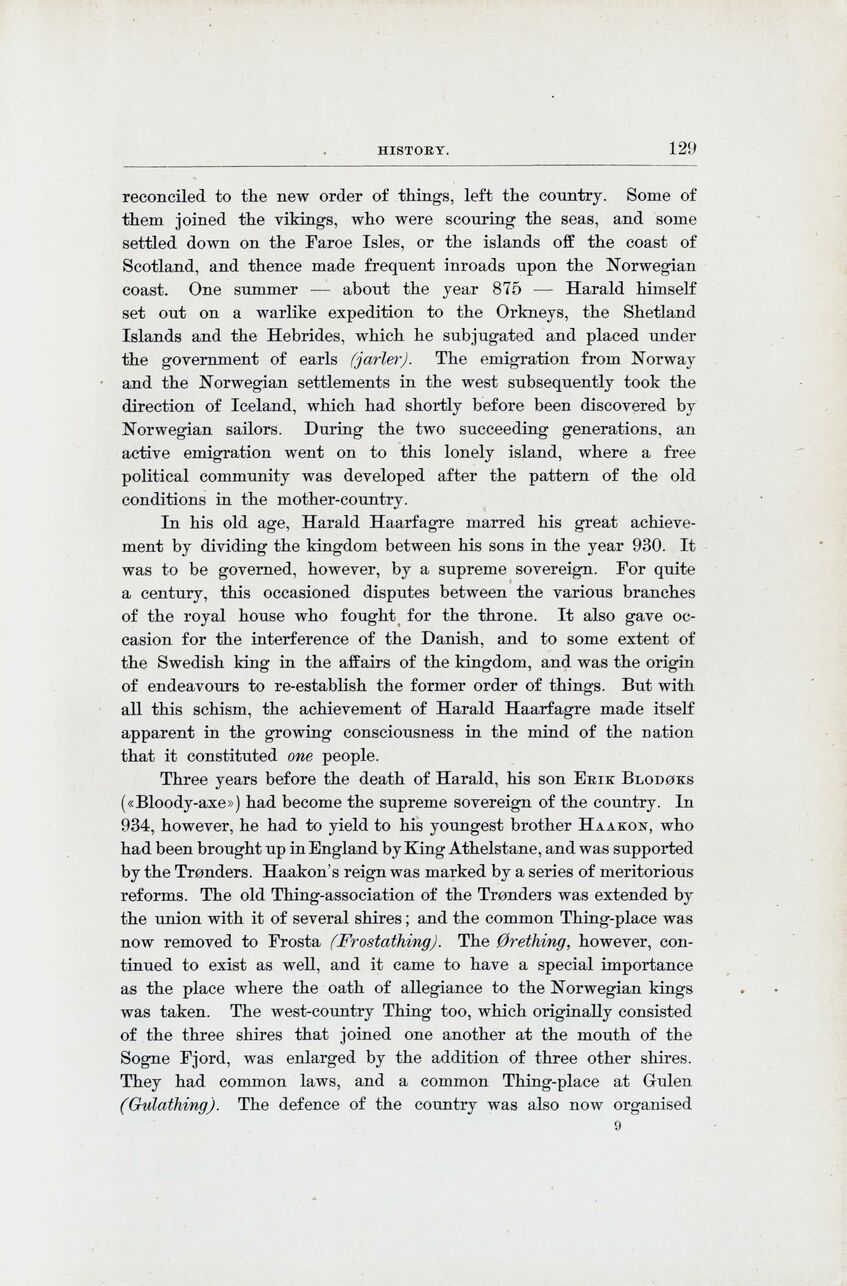
Full resolution (JPEG) - On this page / på denna sida - History, by O. A. Œverland

<< prev. page << föreg. sida << >> nästa sida >> next page >>
Below is the raw OCR text
from the above scanned image.
Do you see an error? Proofread the page now!
Här nedan syns maskintolkade texten från faksimilbilden ovan.
Ser du något fel? Korrekturläs sidan nu!
This page has been proofread at least once.
(diff)
(history)
Denna sida har korrekturlästs minst en gång.
(skillnad)
(historik)
reconciled to the new order of things, left the country. Some of
them joined the vikings, who were scouring the seas, and some
settled down on the Faroe Isles, or the islands off the coast of
Scotland, and thence made frequent inroads upon the Norwegian
coast. One summer — about the year 875 — Harald himself
set out on a warlike expedition to the Orkneys, the Shetland
Islands and the Hebrides, which he subjugated and placed under
the government of earls (jarler). The emigration from Norway
and the Norwegian settlements in the west subsequently took the
direction of Iceland, which had shortly before been discovered by
Norwegian sailors. During the two succeeding generations, an
active emigration went on to this lonely island, where a free
political community was developed after the pattern of the old
conditions in the mother-country.
In his old age, Harald Haarfagre marred his great
achievement by dividing the kingdom between his sons in the year 930. It
was to be governed, however, by a supreme sovereign. For quite
a century, this occasioned disputes between the various branches
of the royal house who fought for the throne. It also gave
occasion for the interference of the Danish, and to some extent of
the Swedish king in the affairs of the kingdom, and was the origin
of endeavours to re-establish the former order of things. But with
all this schism, the achievement of Harald Haarfagre made itself
apparent in the growing consciousness in the mind of the nation
that it constituted one people.
Three years before the death of Harald, his son Erik Blodøks
(«Bloody-axe») had become the supreme sovereign of the country. In
934, however, he had to yield to his youngest brother Haakon, who
had been brought up in England by King Athelstane, and was supported
by the Trønders. Haakon’s reign was marked by a series of meritorious
reforms. The old Thing-association of the Trønders was extended by
the union with it of several shires; and the common Thing-place was
now removed to Frosta (Frostathing). The Ørething, however,
continued to exist as well, and it came to have a special importance
as the place where the oath of allegiance to the Norwegian kings
was taken. The west-country Thing too, which originally consisted
of the three shires that joined one another at the mouth of the
Sogne Fjord, was enlarged by the addition of three other shires.
They had common laws, and a common Thing-place at Gulen
(Gulathing). The defence of the country was also now organised
<< prev. page << föreg. sida << >> nästa sida >> next page >>